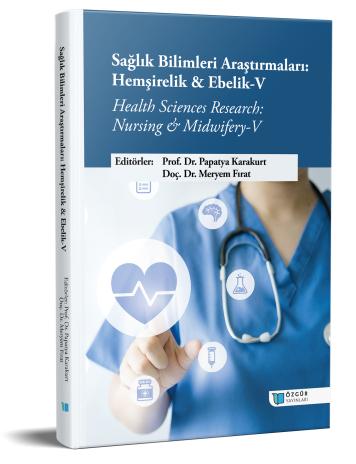
Menopoz Döneminde Egzersiz
Şu kitabın bölümü:
Karakurt,
P.
&
Fırat,
M.
(eds.)
2023.
Sağlık Bilimleri Araştırmaları: Hemşirelik & Ebelik-V.
Özet
Yunanca erkek (ay) ve duraklama (durma) kelimelerinden oluşan menopoz, genellikle 40'lı yaşların sonu ile 50'li yaşların başında meydana gelen, yumurtalık foliküler fonksiyonunun kaybının ardından kadının doğurgan yaşamının sona ermesi olarak tanımlanır. Menopozla ilişkili semptomların ana nedeninin kadınlarda östrojen düzeylerindeki kayıptan kaynaklandığına dair kanıtlar vardır. Menopoz genellikle sıcak basması, idrar bozuklukları, eklem ağrısı ve psikolojik sıkıntı gibi çeşitli sağlık şikayetleriyle ilişkilidir. Menopoz semptomlarını bildiren kadınların genel sağlık durumu genellikle daha kötüdür. Menopoz sırasında ve sonrasında birçok kadında depresyon (mutsuzluk, sinirlilik, ağlamaklılık, enerji eksikliği) veya anksiyete (ruh hali değişiklikleri, uykusuzluk, kalp çarpıntısı, panik atak, unutkanlık veya odaklanma ve konsantrasyon sorunları) belirtileri görülmektedir. Egzersiz, bilinen az sayıda yan etkisi ile uygun maliyetli bir alternatif yöntem olup, egzersizin menopoz semptomları, depresyon ve yaşam kalitesi üzerinde olumlu etkisi olduğu da gösterilmiştir. Ayrıca egzersizin kemik, kardiyovasküler, metabolik, diyabet, kanser, uzun ömür, psikolojik sağlık ve genel yaşam kalitesi üzerinde pek çok faydasının olduğu açıktır. Bu nedenle kadınların menopoza geçiş dönemi ve sonrasında fiziksel olarak aktif olması uygundur. Sonuç olarak sağlık profesyonellerinin kadın yaşamında önemli bir yere sahip olan menopoz ve sonrası dönemde kadın sağlığını korumak ve yükseltmek için kadınların egzersiz yapmalarına teşvik edilmesi ve farkındalık oluşturulması önemlidir.

